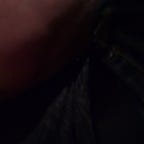How I setup my new Macbook Pro
Ahh the joy of unboxing a new Macbook Pro. It comes around every few years, interspersed with multiple new phones, watches and other gadgets. But setting up these devices has always been more fun (to me at least) than setting up my Mac. Why? Because Android & iOS have just moved so much faster than OSX and Windows that every new phone has a better way to set it up and import from your last device. On Mac’s, not so much…
So I’ve finally decided I need a guide for myself, to remind me of what I did to setup my Mac this year. Maybe I’ll reflect on what I did when I get my next one. So here goes…
Installs:
- Install Chrome. Safari — you’ve come a long way, but alas. Chrome + Extensions + Chrome Sync on Android is an unbeatable combo. Once installed, I sign into my 2 Chrome accounts — Personal & Business, and I’m ready to go! Not quite…there’s a bit of Chrome-specific setup a little later down the list.
- Install Slack — the OSX app for Slack is way better than using it in the browser. It’s quick, slick, non-intrusive and not too power hungry.
- Install officey stuff — Office 2016, Google Drive & Dropbox. Nothing special here — just necessary. Office 2016 is an astronomical leap up from 2011 — trust me.
- Install Shazam — I really like Shazam’s always-on Mac app. Not only is it useful to discover new music I’m listening to, it also becomes like a Listen History, of sorts. I just wish they added the Karaoke feature from the mobile apps.
- Install Clean My Mac — I love this app. It sits in my toolbar and offers a quick glance into free HD space, free RAM (with a RAM booster), battery health and remaining life, and trash status. Occasionally, it reminds me to cleanup without being annoying. A hard act to follow…
- Install PushBullet — This app is a Godsend. It syncs your iOS/Android notifications to your PC, with selective muting for some apps. It allows you to send/receive SMS from your Mac. And the best part — Universal Copy & Paste allows you to to copy text from your Mac and paste it … yes, on your phone! And vice versa of course.
- Because I also develop stuff on the side or for school, I also install Brackets and iTerm. More on my developer-specific setup in a future post.
System Preferences:
After completing all of these installs, I setup my Trackpad options and some other OCD stuff in System Preferences. Here’s my setup:
- Hot Corners— Top Left goes to launchpad, Top Right does nothing, Bottom Left shows Desktop and Bottom Right shows all windows from the current app.
- Dock & Status Bar — This is how I have them currently:
3. Keyboard Shortcuts — These are the main ones I modify:
4. Notification Panel — Nothing special. Here it is:
Show/Hide Files:
This is a biggie for me. I love being able to see what files are in a folder but the OSX/Unix architecture can make folders look ugly, and also confuse apps like Google Drive. So here’s what I do:
- In iTerm/Terminal, paste the following: sudo nano ~/.bash_profile
- Enter your Mac’s administration password if required, then hit return
- At the bottom of the open (possibly empty) .bash_profile file, paste the following: alias showFiles=’defaults write com.apple.finder AppleShowAllFiles YES; killall Finder /System/Library/CoreServices/Finder.app’
- Below that, paste the following: alias hideFiles=’defaults write com.apple.finder AppleShowAllFiles NO; killall Finder /System/Library/CoreServices/Finder.app’
- Press ctrl + O and hit return to save the file
- Press ctrl + X to exit the file and return to the command line
- In Terminal, paste the following: source ~/.bash_profile to refresh your profile and make the aliases available
Now when you want to show hidden files, all you need type in Terminal is showFiles, then hideFiles when you want to hide them. Easy as pie :)
